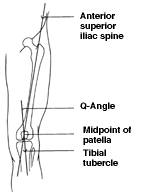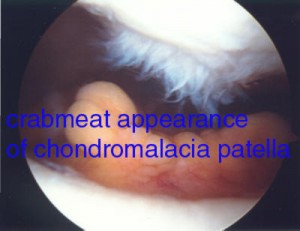Healthy Life: Chondromalacia Patellae (749)
Healthy Life: Chondromalacia Patellae
蘇鎮邦 (Christopher So):
舒整物理治療師 (Manipulative Physiotherapist) 人類工程師 (Ergonomist)
Chondromaliacia Patellae is also called Patellofemoral Syndrome.
The knee joint is made up of three joints (Diagram 1 or previous article). It is a complicated structure: the tibia and femur make up the tibiofemoral joint。The fibula and tibia make up the tibiofibular joint; the femur and patella make up the patellofemoral joint.
The patella cartilage has no blood supply. It is like a sponge with the fluid nutrient relying on pressure to spread it evenly within the cartilage (Diagram 3). The inner side or medial side of the patella which is called the odd facet will not get any pressure or compression until the knee is bent to 130 degrees or more. However, modern living does not require people to squat. If people do not play sports, the chance of compression on this odd facet is minimal. Also, the muscles and ligaments around the joint will be weakened because of lack of compression and stress on them. Most activities of daily living require only 30% of the maximum power of joint muscles and ligaments. Without stress on the muscles and ligaments, their strength and endurance will decrease or degenerate as people age. However, people may involve themselves with unexpected strenuous activities e.g. weekend gardening or backyard cricket. These are the times they will get injuries to the knee which will further affect the knee cap or patella. This will hasten the degenerative process. Treatment to correct such deficiency is necessary or an operation may be required.
Chondromalacia patella is more common in females than males to the ratio of 4 to 1. It is most common around the age of 16 to 26. Anatomical predisposition to such condition is due to the female pelvis being much wider than that of the male. This increases the Q anlge (Diagram 2) and stress especially to the medial side of the knee. Degeneration of the odd facet will cause pain and weakness in the quadriceps medialis and increases the imbalance to the now stronger quadriceps lateralis which will pull the patella to the outside or lateral side of the knee. This will cause further degeneration of the odd facet. Treatment to the patella and correction of the mechanical faults is vital for full recovery and prevention of surgical procedures.

(Diagram 1)Anatomy of the knee joint

(Diagram 2)Q angle

(Diagram3)degeneration of the cartilage
